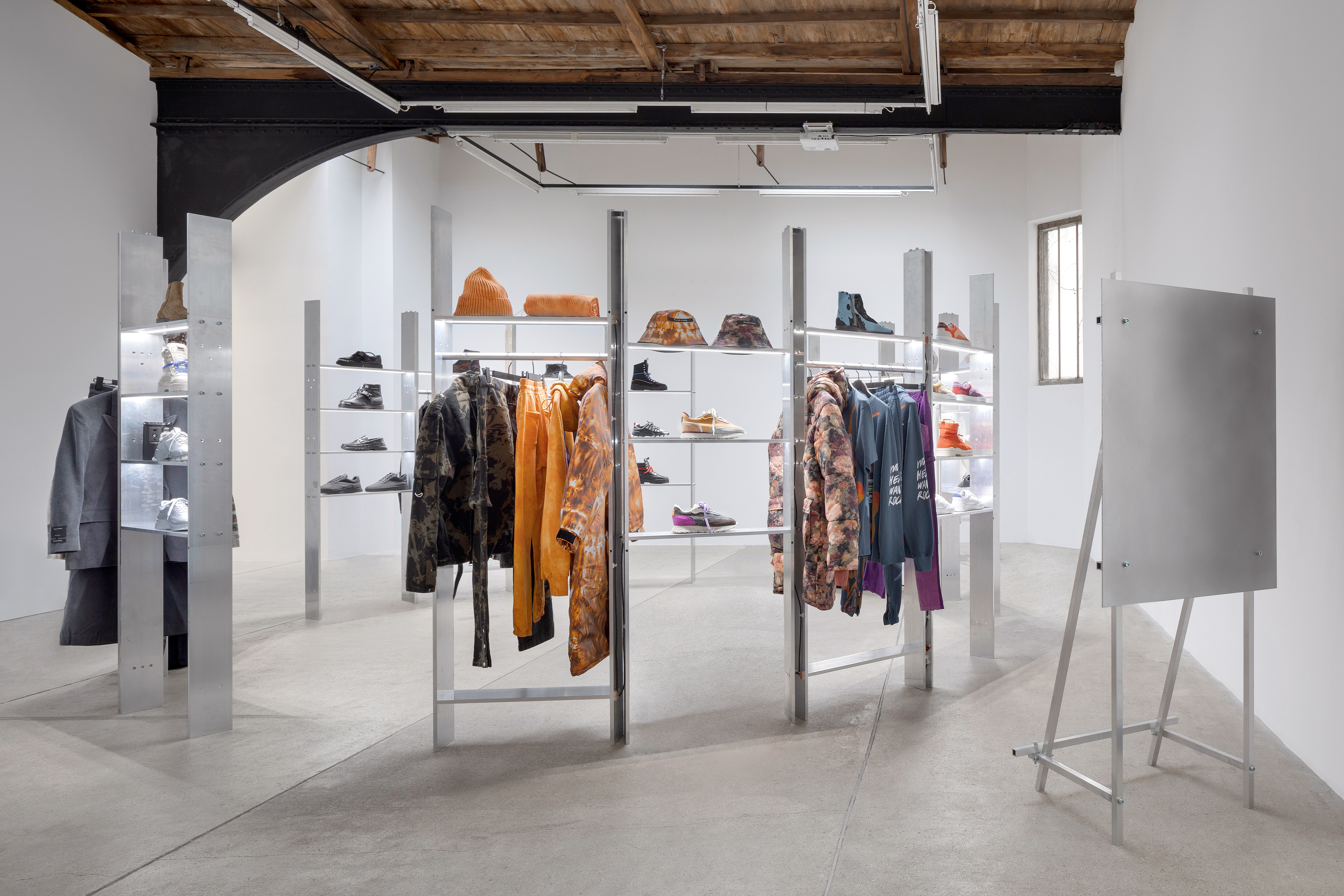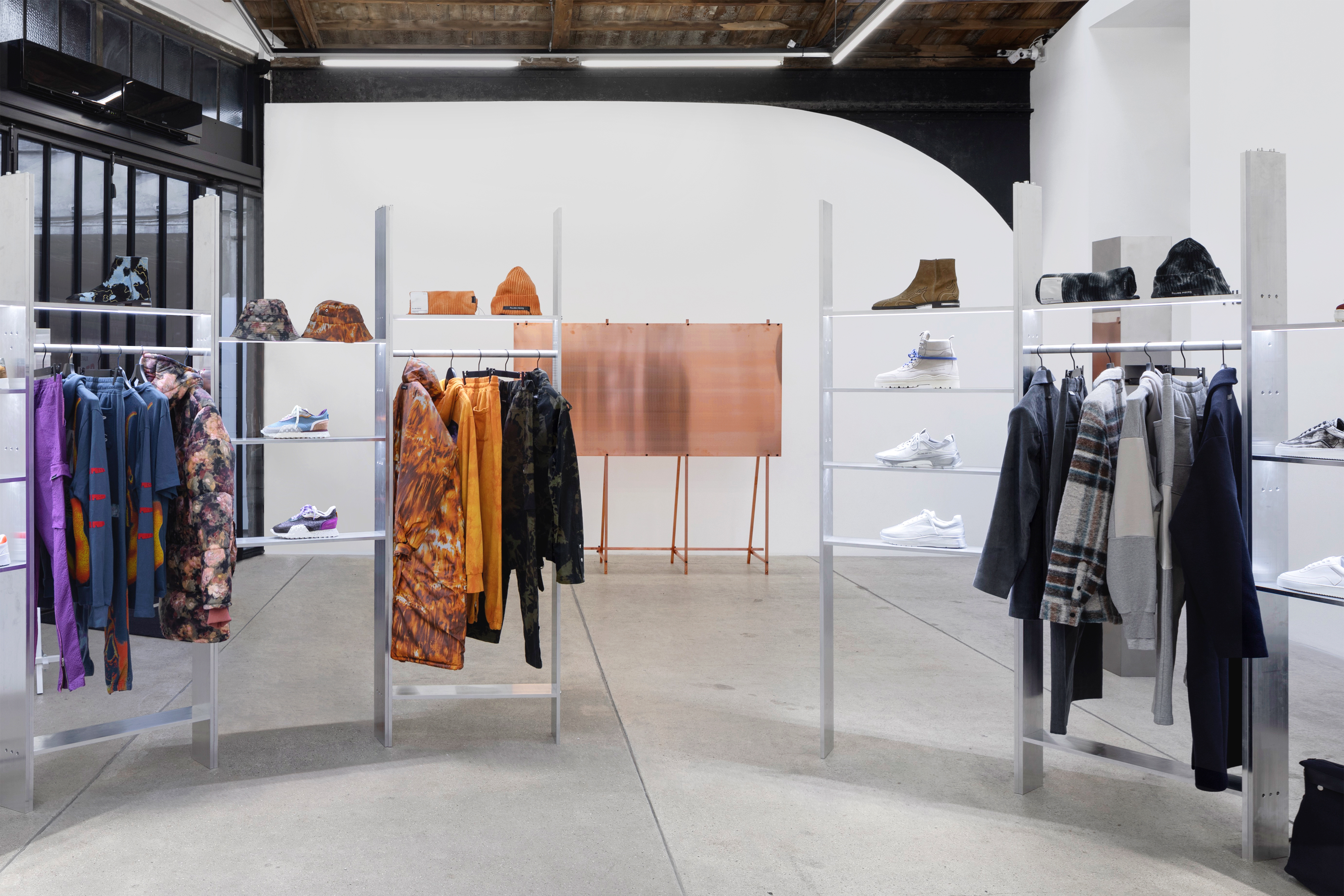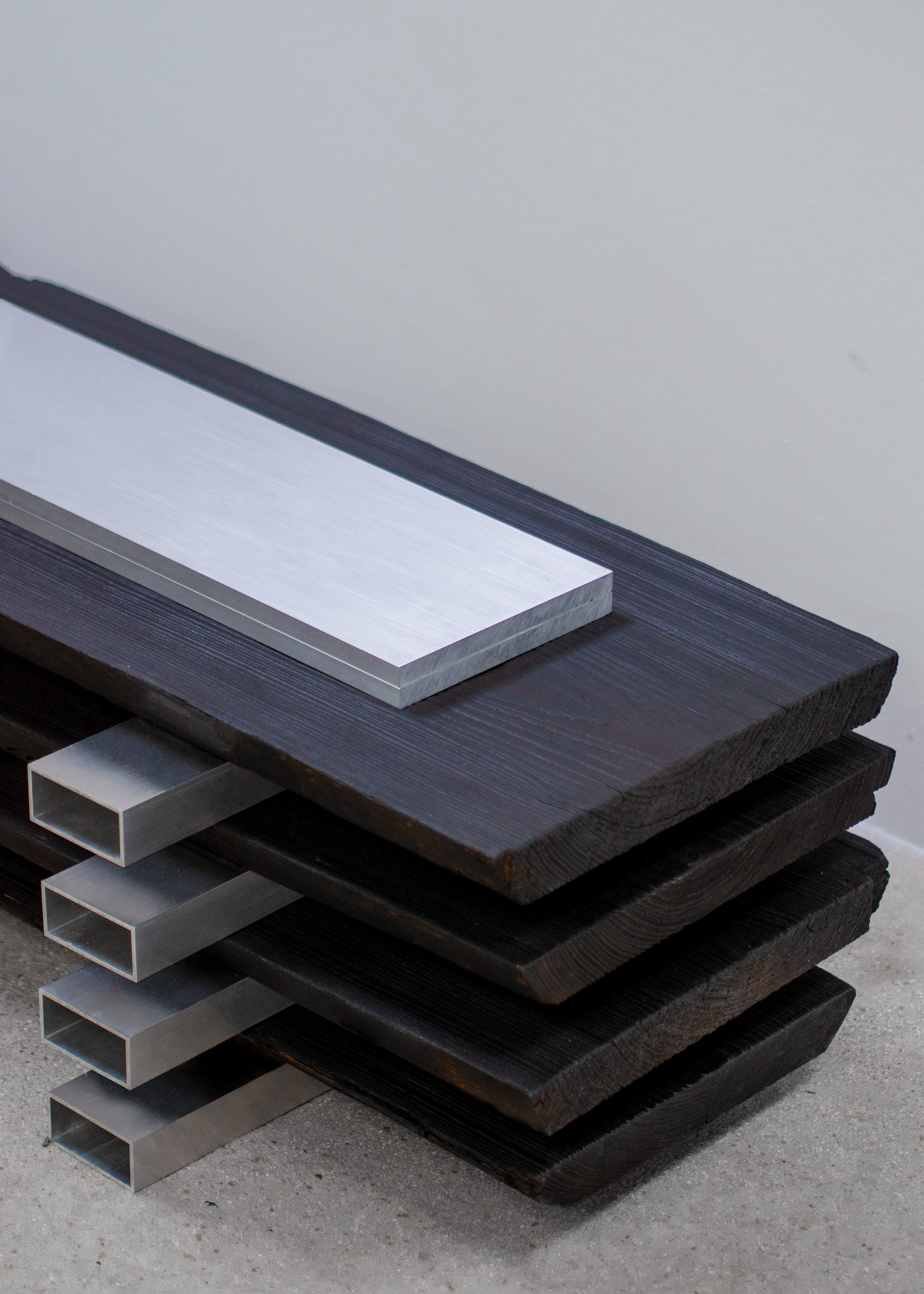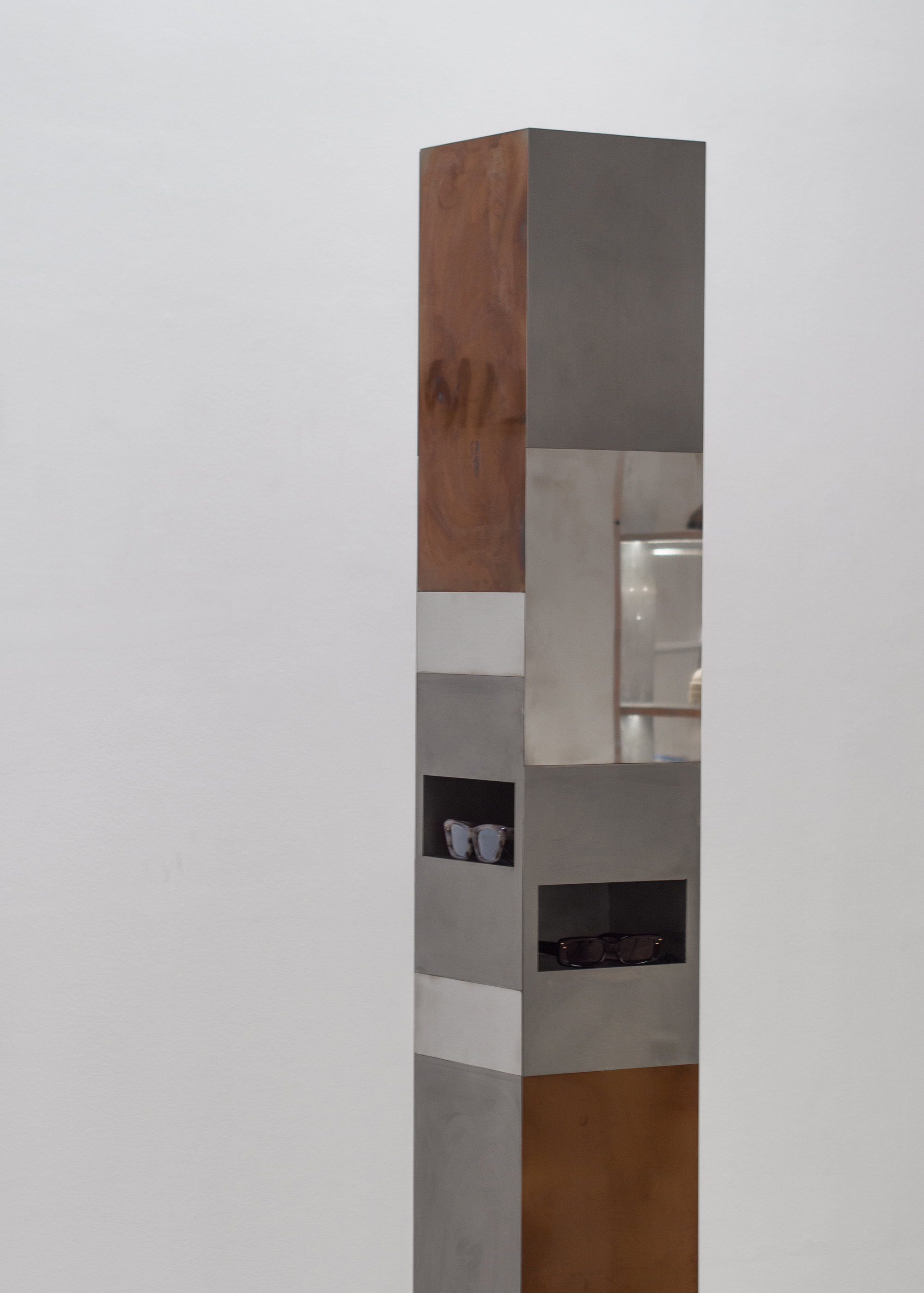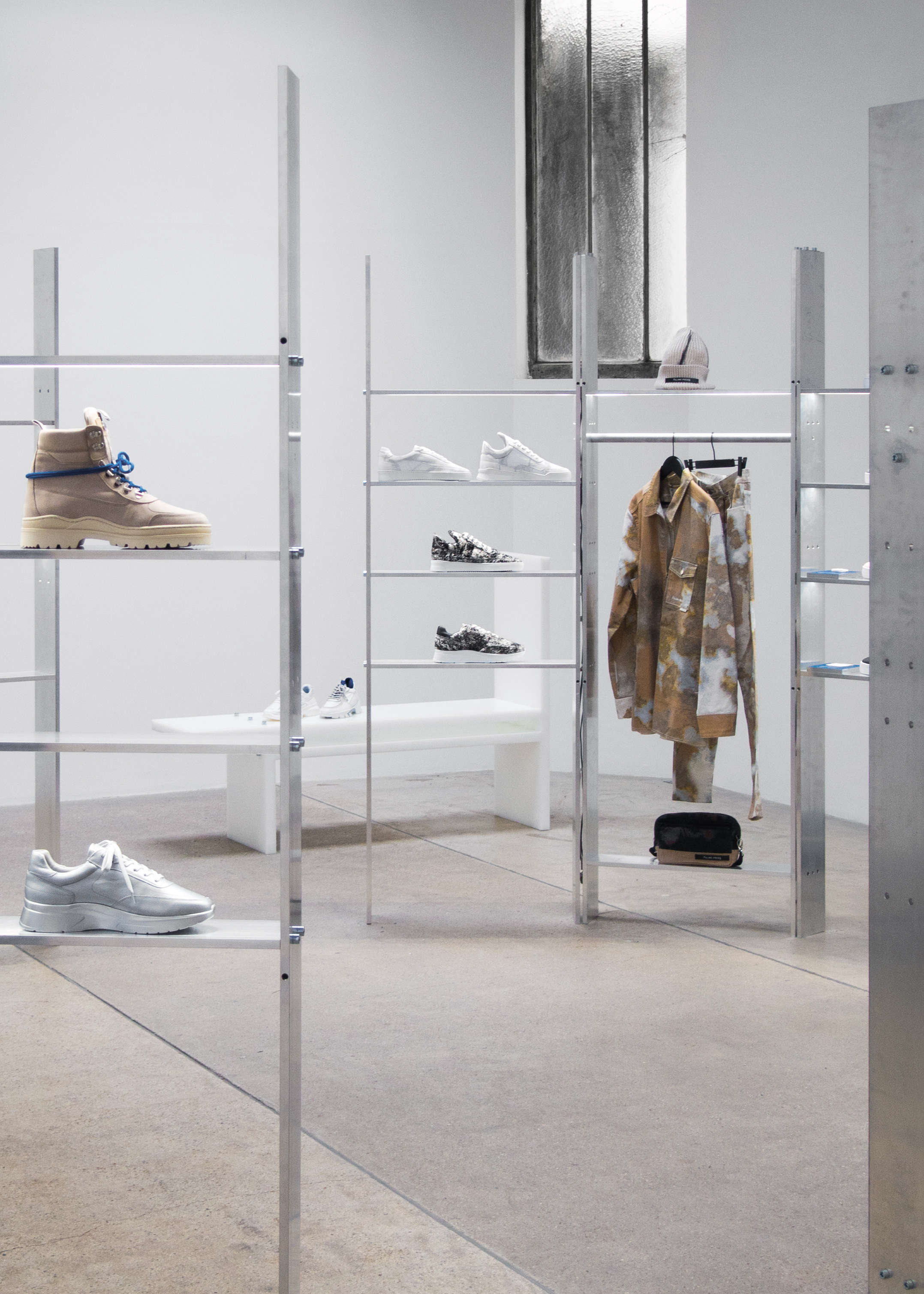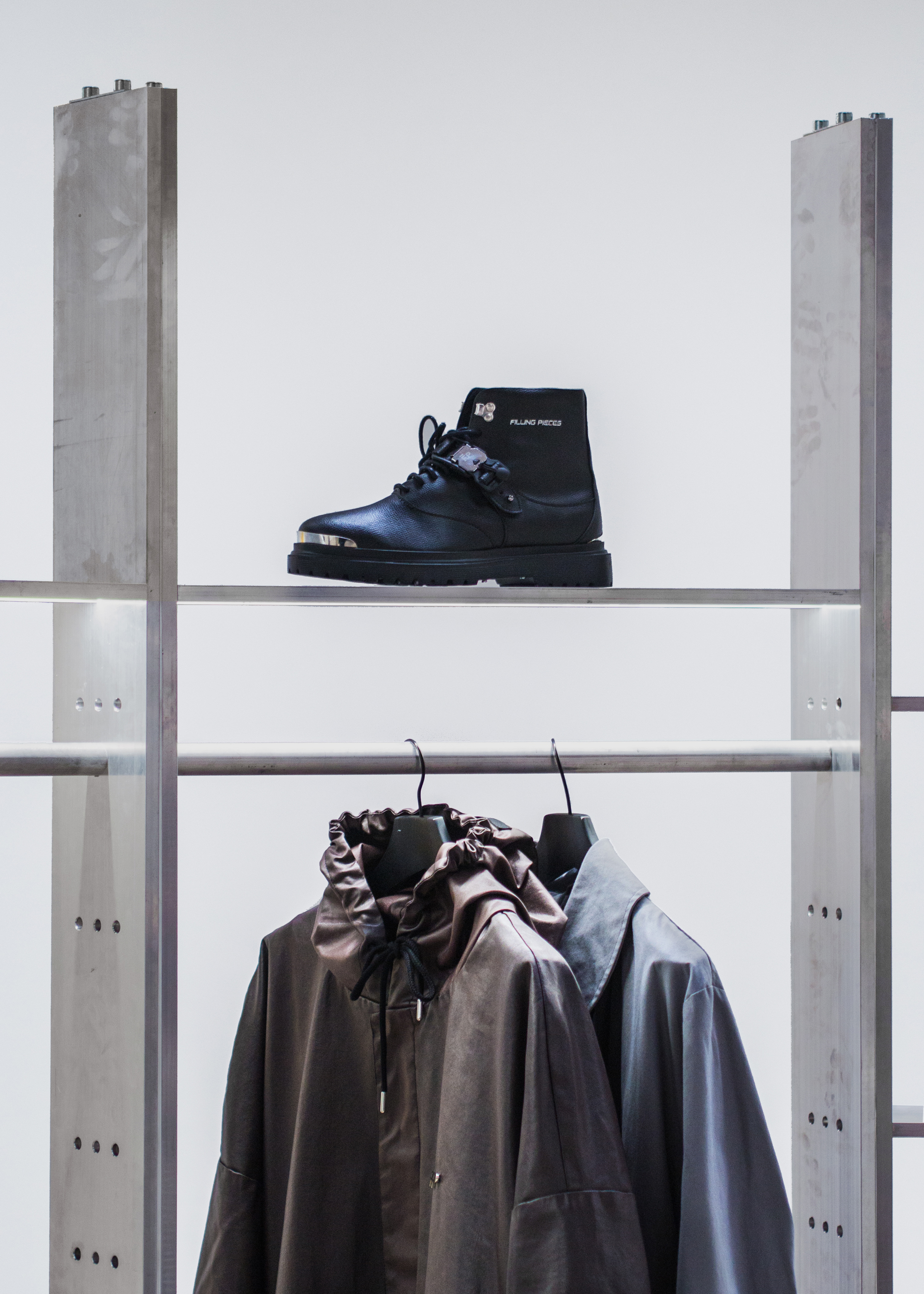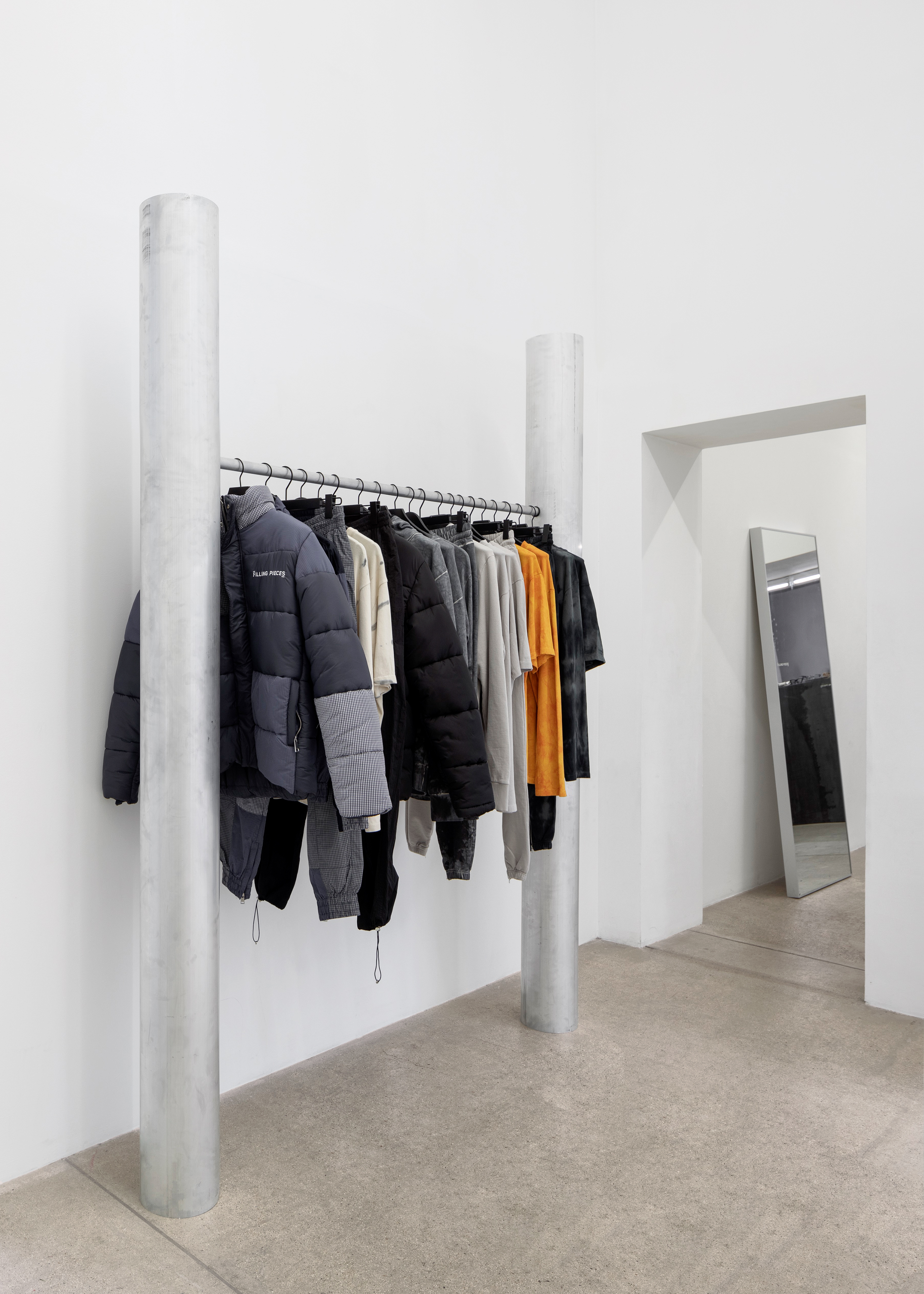Filling_Pieces_AW2020
Installation / Gallery Frank Elbaz / Paris / January 2020

A temporary showroom for the brand Filling Pieces, displaying their newest collection during the Paris Fashion Week of January 2020. The installation consisted of several structures gravitating around a circular display realised in aluminum and showcasing the entire ready-to-wear collection. All around this central structure four display pieces matched the themes of the collection: Air, Water, Earth, Fire.
Realised in various materials such as aluminum, copper, polyamide, burnt wood, polyethylene and stainless steel, every element had a specific materiality. A stainless steel ‘tower’ composed of brushed, heated and mirror polished plates was used as a display for sunglasses. A ‘bench’ was realised in HMPE 1000 (high density polyethylene) to display a selection of shoes and backpacks. Small accessories were displayed on a low podium made of burnt wooden plates and aluminum profiles. A copper structure was located near the entrance of the space as a support for textiles.
In a second room, aluminum profiles and polyamide plates were used to create two shelves and a rack, displaying Filling Pieces’ entire shoe collection. In a third room, a table and a console were designed according to the standard dimensions of polyamide plates and tubes.
The design of each piece was based on the same elementary principles:
- materials are displayed in their natural form and left untreated.
- the structures are designed according to industrial standards.
- everything can be disassembled and all connections are visible.
These simple principles associated with Filling Pieces’ own identity generated a strong yet versatile installation entirely dedicated to the display of their clothing pieces. As they were all designed with standardized and widely available materials, the various display structures could be recreated in different places and easily scaled and repeated. Their essential design facilitates an adaptation to different contexts, thus offering a new perspective on the lifecycle of temporary installations.

